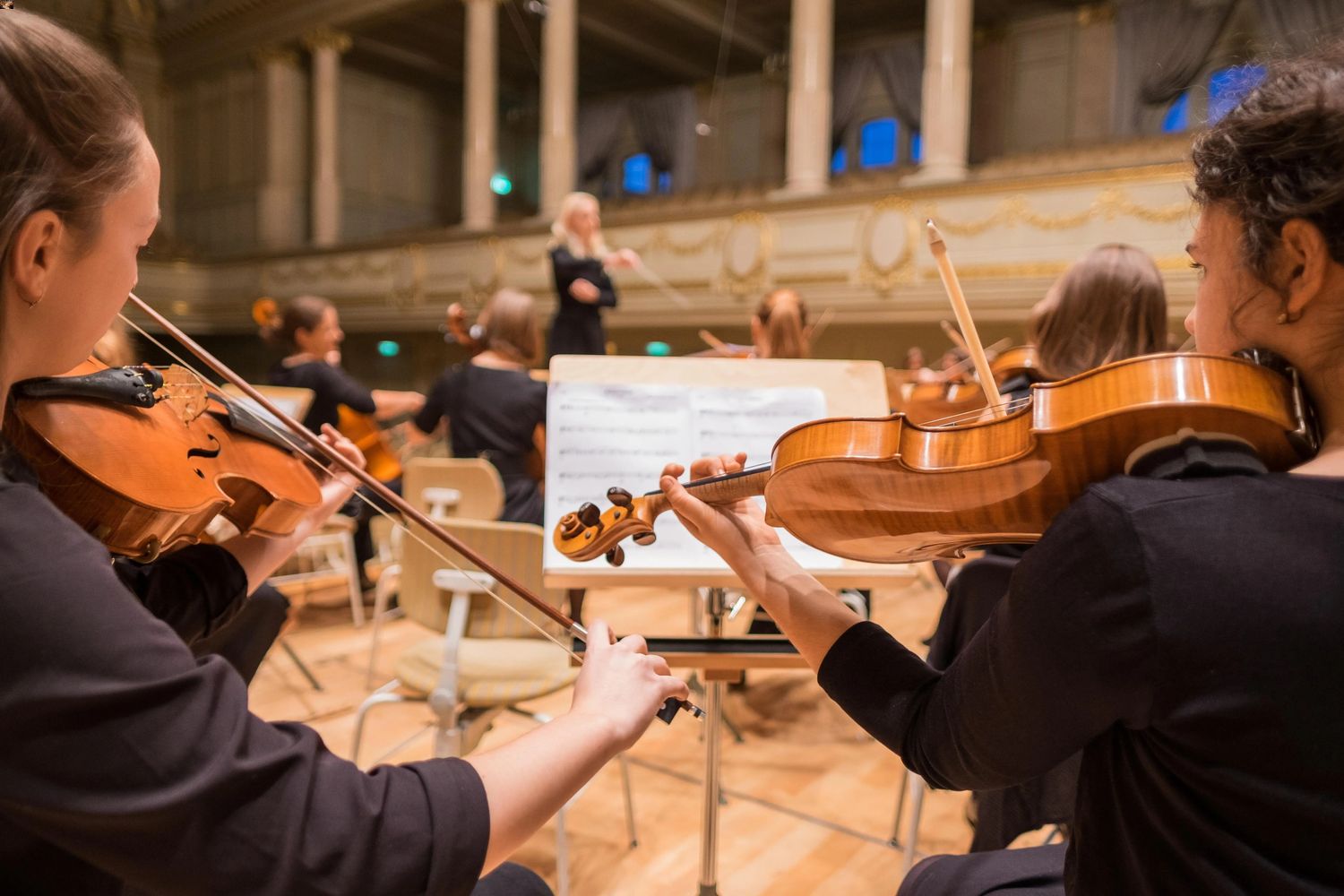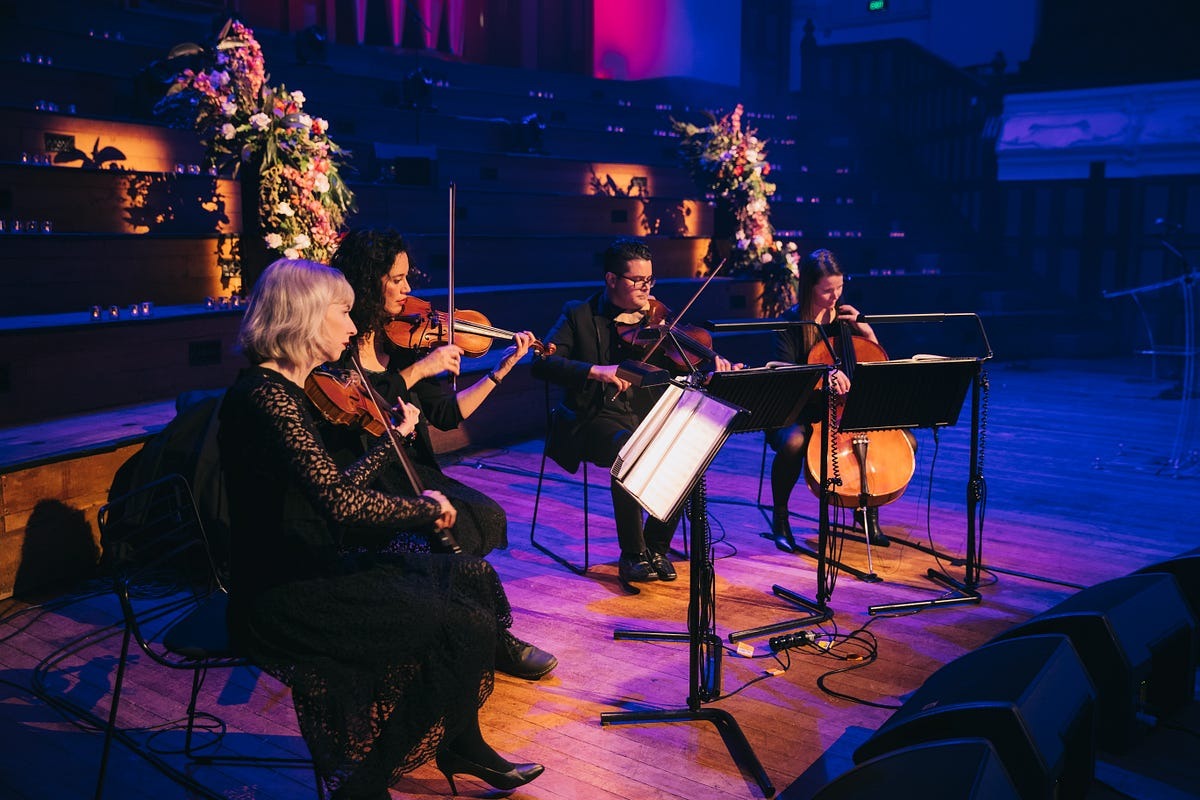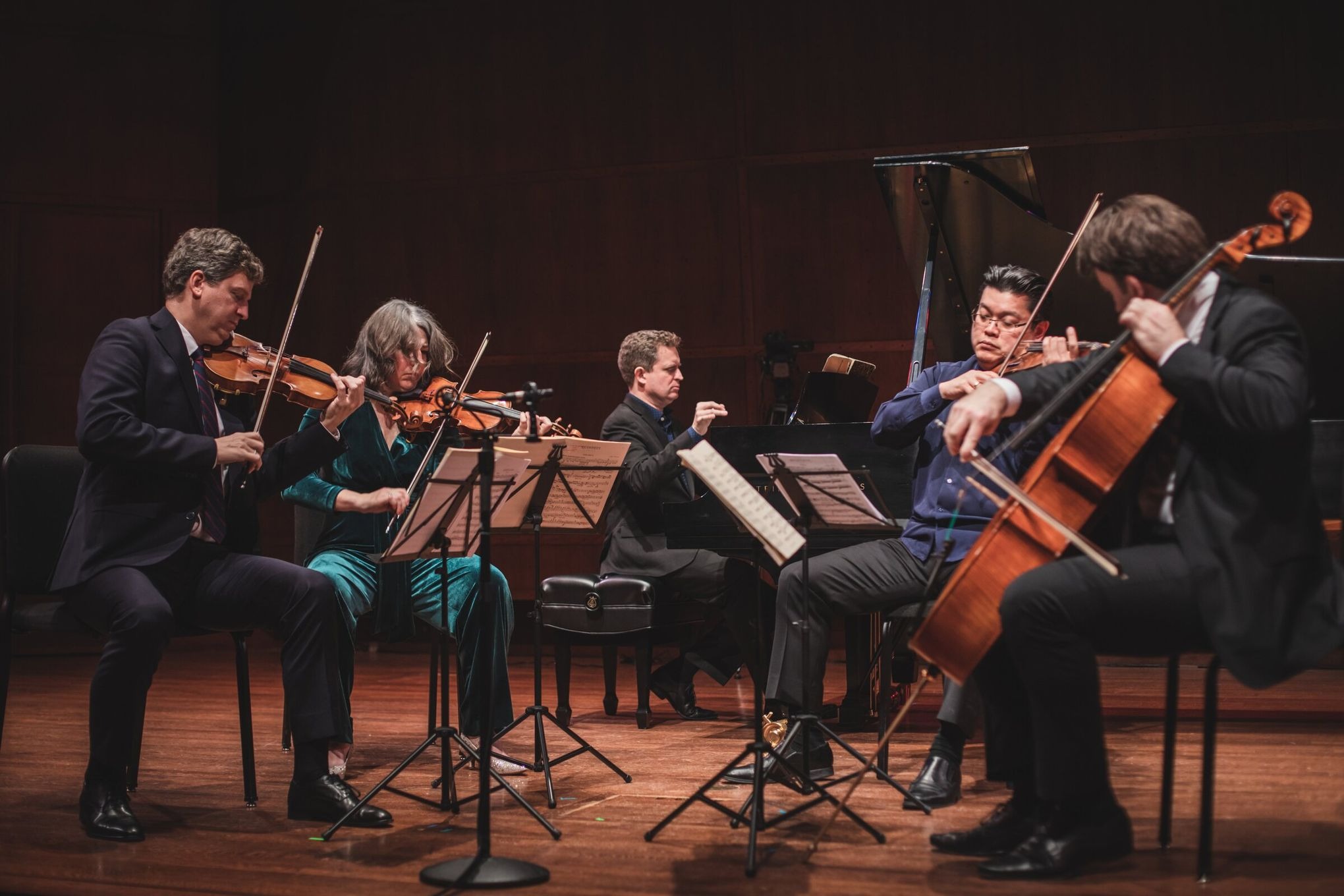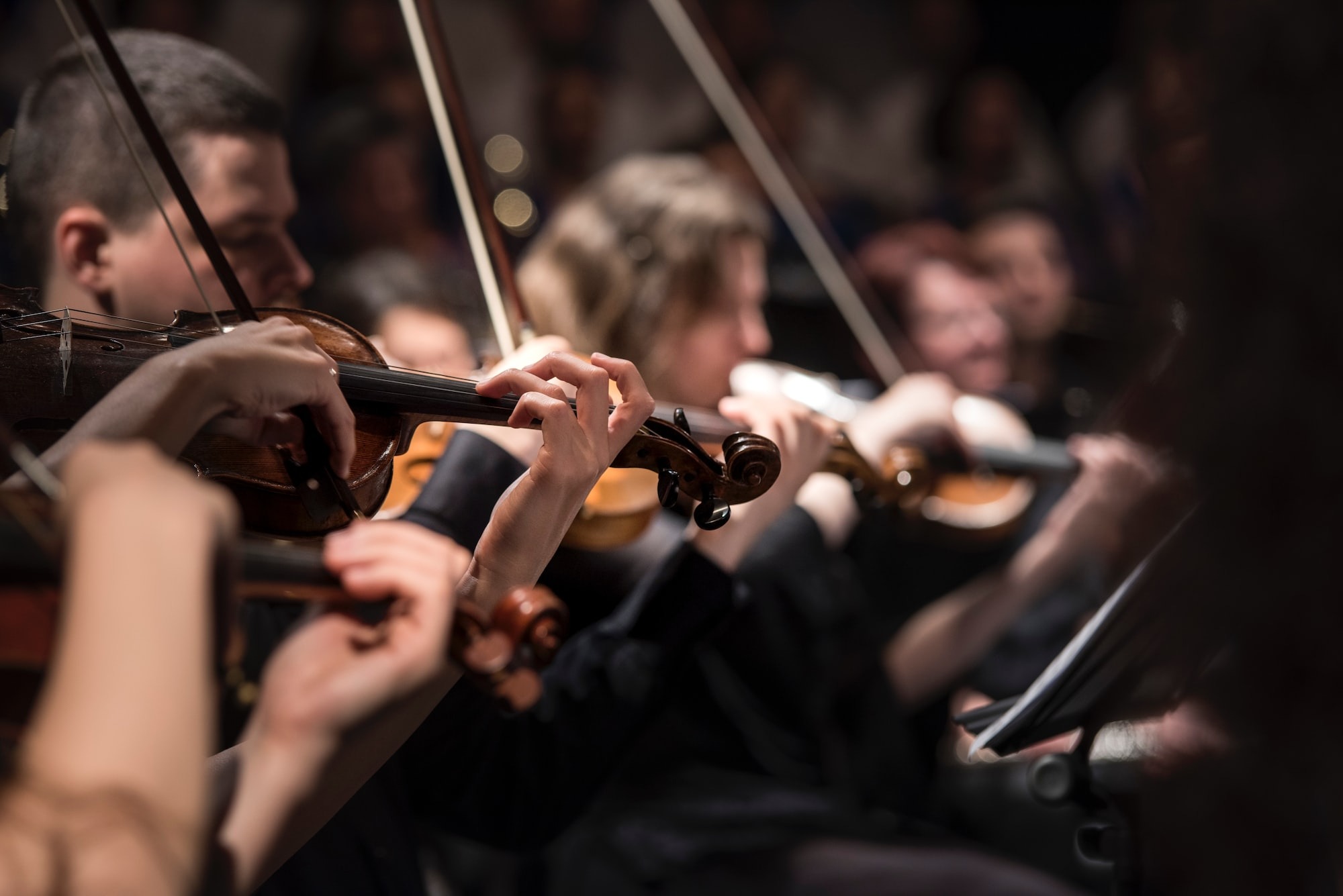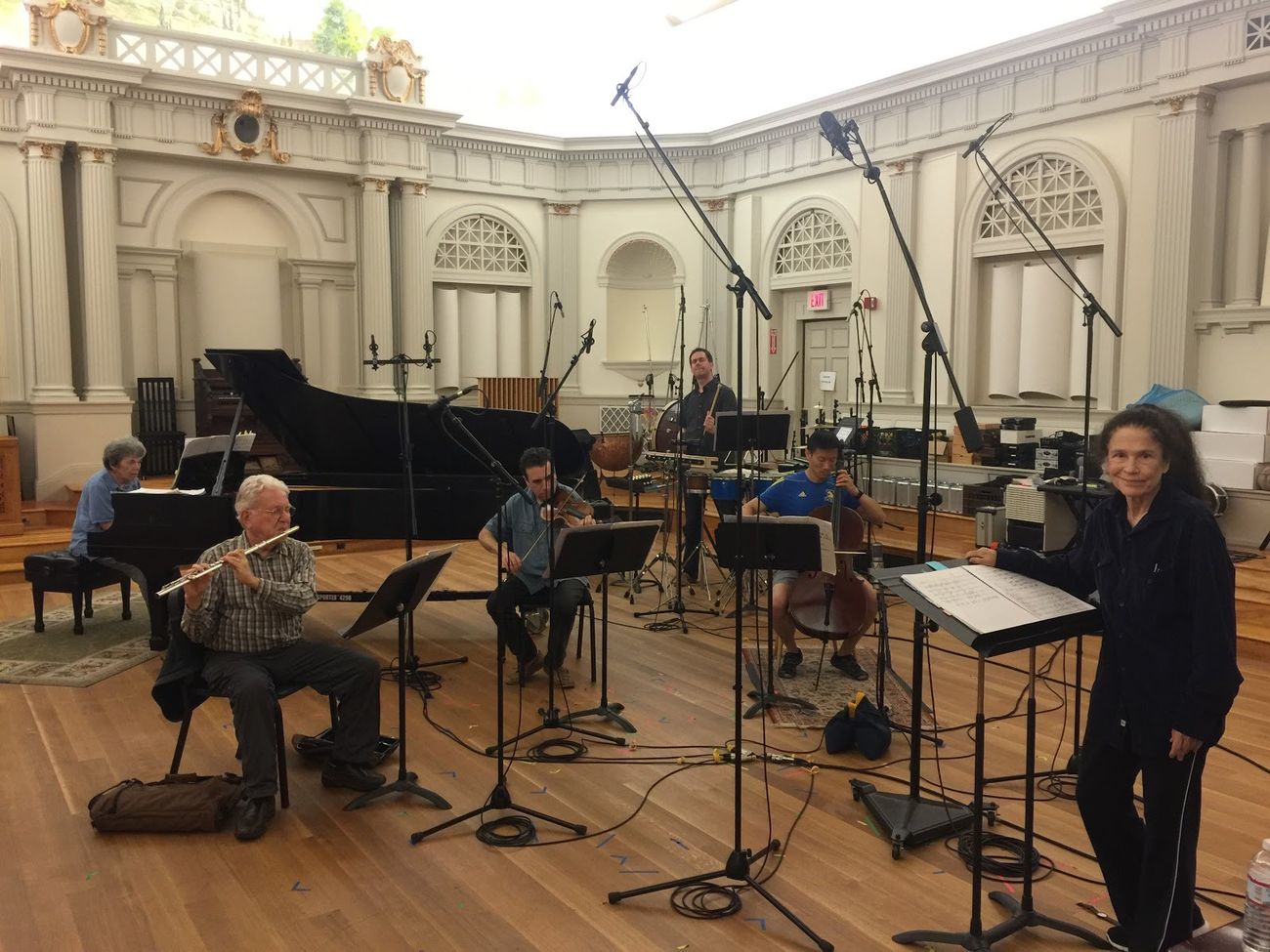Home>Events & Info>Chamber Music>Chamber Music Of Britten, Why?
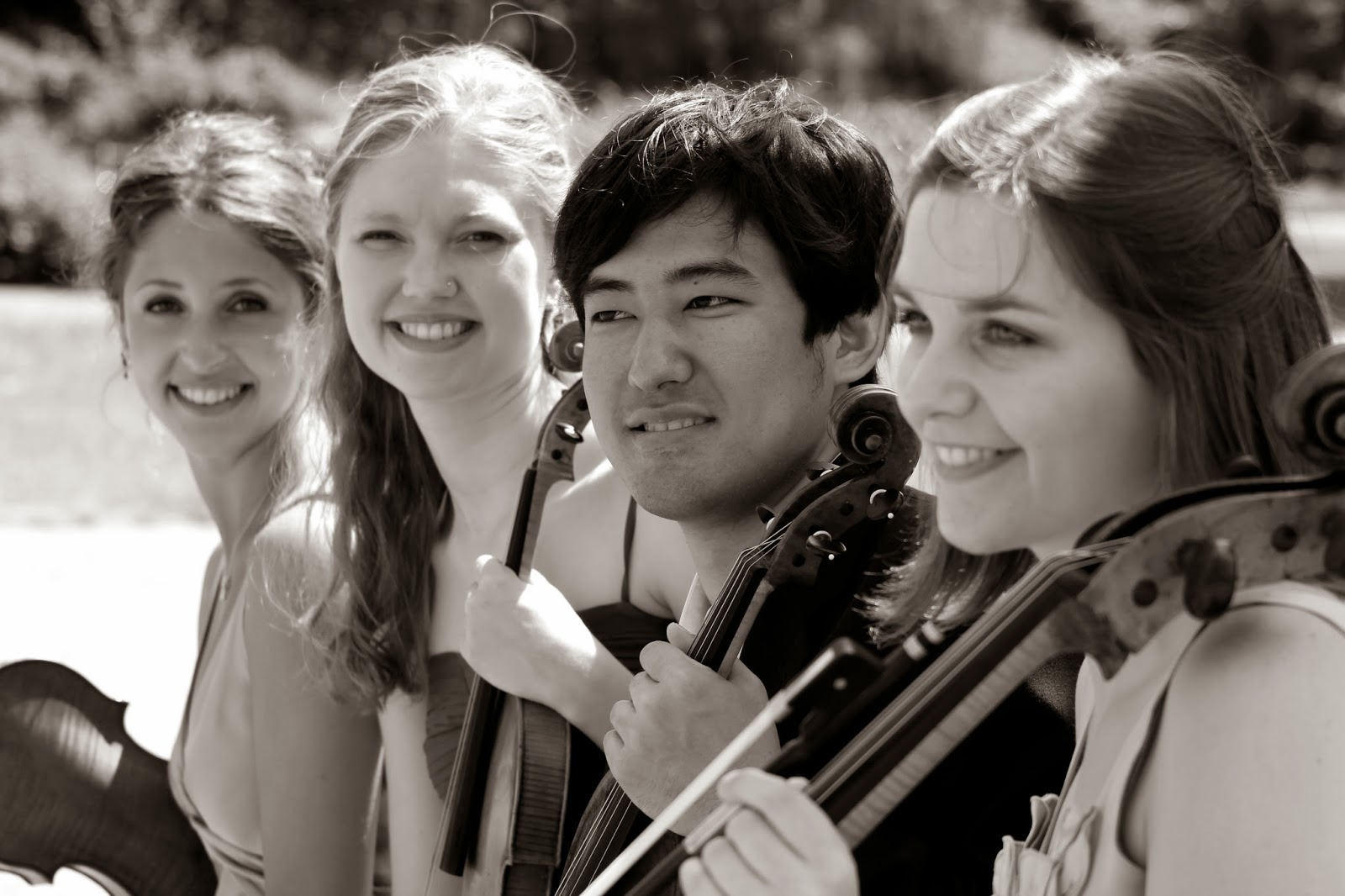

Chamber Music
Chamber Music Of Britten, Why?
Modified: January 22, 2024
Discover the enchanting chamber music compositions of Britten, showcasing his nuanced and emotive musical style. Immerse yourself in the world of chamber music and experience the brilliance of Britten's compositions firsthand.
(Many of the links in this article redirect to a specific reviewed product. Your purchase of these products through affiliate links helps to generate commission for AudioLover.com, at no extra cost. Learn more)
Table of Contents
Introduction
Chamber music is often hailed as one of the most intimate and refined forms of musical expression. It allows for a close interaction between a small group of musicians, typically ranging from two to nine performers, creating a rich and nuanced musical dialogue. Within the realm of chamber music, there are composers who have made significant contributions and left a lasting impact on the genre. One such composer is Benjamin Britten.
Born on November 22, 1913, in Suffolk, England, Benjamin Britten emerged as one of the leading figures in British classical music during the 20th century. He was not only a composer but also a pianist and conductor. Throughout his illustrious career, Britten composed a wide range of works, including operas, orchestral and choral compositions, and chamber music.
Chamber music, in particular, held a special place in Britten’s heart. He demonstrated a deep understanding of the intricacies and nuances of this genre, creating compositions that showcased his unique musical voice. Britten’s chamber music not only reflects his compositional prowess but also highlights his ability to capture the essence of human emotion and expression through music.
In this article, we will explore the significance of Britten’s chamber music and delve into the reasons why it continues to be celebrated and performed today. We will examine the characteristics that make his chamber music stand out and delve into the influence and legacy that Britten has left behind in the world of classical music.
Join us as we embark on a journey through the mesmerizing world of Benjamin Britten’s chamber music, uncovering the beauty and brilliance of his compositions, and gaining a deeper appreciation for his contributions to this captivating genre.
Background of Benjamin Britten
Benjamin Britten was born in Lowestoft, Suffolk in 1913. From a young age, he displayed an extraordinary musical talent and was encouraged by his parents to pursue his passion. He started composing at the age of five and received formal music education at the Royal College of Music in London.
During his time at the Royal College of Music, Britten studied composition with prominent composers such as Ralph Vaughan Williams and John Ireland. He quickly gained recognition for his extraordinary musical abilities and was awarded several prestigious scholarships.
In 1939, Britten decided to leave England and travel to the United States because of the escalating tensions in Europe leading up to World War II. While in the United States, he collaborated with various musicians and composers, broadening his musical perspectives and influences. However, Britten’s longing for his homeland remained strong, and he returned to England in 1942.
Upon his return, Britten settled in the coastal town of Aldeburgh, where he established the annual Aldeburgh Festival. This festival served as a platform for showcasing his own compositions as well as those of other contemporary composers. It became a significant cultural event and contributed to the renaissance of English classical music.
Britten’s career flourished in the years that followed. He composed a wide range of music, including operas, symphonies, choral works, and chamber music. His compositions were marked by their distinctive style, characterized by rich harmonies and lyrical melodies combined with moments of dissonance and experimentation.
Throughout his life, Britten also collaborated with his partner, the tenor Peter Pears. Pears often performed as the soloist in Britten’s vocal works and played a vital role in shaping the composer’s music. Together, they established a fruitful musical partnership that lasted for decades.
Unfortunately, Britten’s health began to deteriorate in the 1970s, and he was diagnosed with heart disease. Despite his declining health, he continued to compose until his death in 1976, leaving behind a vast and varied body of work.
Today, Britten is regarded as one of the most influential composers of the 20th century, with his contributions to chamber music, opera, and vocal music being particularly revered. His music continues to be performed and celebrated worldwide, ensuring that his legacy lives on.
The Genre of Chamber Music
Chamber music is a genre of classical music that is highly regarded for its intimate and collaborative nature. Unlike orchestral compositions, chamber music is performed by a small ensemble of musicians, typically ranging from two to nine performers. The term “chamber” refers to the spacious rooms in which this style of music was traditionally performed during the 17th and 18th centuries.
At its core, chamber music provides an opportunity for musicians to engage in a close musical conversation. The small ensemble allows each performer to have a significant role, creating a sense of musical intimacy and interplay. The absence of a conductor encourages a democratic approach to interpretation and musical decision-making among the musicians.
The ensemble combinations in chamber music can vary, but some common configurations include string quartets, piano trios, wind ensembles, and duos. Each of these configurations brings its unique sonic colors and expressive possibilities to the performance.
Chamber music compositions often showcase the technical virtuosity and expressive capabilities of the performers, requiring them to communicate and synchronize their musical ideas in a highly nuanced and coordinated manner. The musicians must listen and respond to each other’s playing, creating a seamless musical dialogue.
The repertoire of chamber music is vast and includes compositions from various periods, including Baroque, Classical, Romantic, and contemporary eras. Many renowned composers throughout history have made significant contributions to the genre, such as Mozart, Beethoven, Brahms, Schubert, and, of course, Benjamin Britten.
Chamber music is often performed in intimate settings such as small concert halls, salons, or private residences. This close proximity between the performers and the audience allows for an immersive and engaging musical experience, where every nuance and subtlety of the performance can be appreciated.
Chamber music continues to be a beloved and essential part of the classical music repertoire. Its intimate nature creates a unique connection between the performers and the audience, inviting them into a world of musical conversation and exploration. The genre embodies the essence of collaborative artistry and showcases the limitless possibilities that can emerge when musicians come together to create something beautiful and profound.
Britten’s Contribution to Chamber Music
Benjamin Britten made a significant and lasting contribution to the genre of chamber music through his innovative compositions and unique musical voice. His works for small ensembles not only showcase his mastery of composition but also demonstrate his profound understanding of the expressive power of chamber music.
One of Britten’s notable contributions to chamber music is his extensive output of string quartets. He composed three highly regarded string quartets, each demonstrating his exceptional craftsmanship and musical depth. The String Quartet No. 1, also known as the “Quartet in D,” reflects his exploration of contrasting moods and intricate harmonies. The String Quartet No. 2, subtitled “Quartetto mistico,” reveals Britten’s ability to create a sense of ethereal and otherworldly beauty. The String Quartet No. 3, written during his final years, offers a poignant and introspective reflection on his life and mortality.
Britten’s contribution to chamber music extends beyond string quartets. He composed works for various chamber ensembles, including piano trios, wind ensembles, and solo instruments with accompaniment. Notable examples include the Piano Trio in C Major, which showcases his lyrical melodies and rhythmic vitality, and the Suite for Violin and Piano, which reflects Britten’s penchant for exploring rich and imaginative textures.
Britten’s compositions often incorporate elements of English folk music, showcasing his deep connection to his homeland’s musical traditions. His skillful integration of folk-inspired melodies and harmonies adds a distinct flavor to his chamber music, creating a unique sonic landscape that is both familiar and innovative.
Moreover, Britten’s chamber music is known for its expressive power and emotional depth. He had a remarkable ability to depict human emotions and experiences through his music, infusing his compositions with a sense of poignancy, introspection, and even moments of tension and turmoil. His chamber works often explore themes of love, loss, and the complexities of human relationships, allowing listeners to connect on a deeply personal level.
Britten’s contribution to chamber music extends beyond his compositions. He also played a crucial role in promoting and championing the performance of chamber music by establishing the annual Aldeburgh Festival. The festival provided a platform for emerging and established chamber musicians to showcase their talents and celebrate the art of chamber music. Britten’s dedication to the genre helped create a fertile environment for the development and appreciation of chamber music in the United Kingdom and beyond.
In summary, Benjamin Britten’s contribution to chamber music is significant and far-reaching. Through his innovative compositions, incorporation of folk elements, and exploration of human emotions, he has left an indelible mark on the genre. Britten’s chamber music continues to be celebrated and revered, captivating audiences and musicians alike with its beauty, depth, and expressive power.
Characteristics of Britten’s Chamber Music
Benjamin Britten’s chamber music is characterized by a range of distinctive features that set it apart from the works of other composers within the genre. These characteristics contribute to the unique and captivating nature of his compositions.
One notable characteristic of Britten’s chamber music is his inventive and intricate use of harmonic language. He was known for exploring complex harmonies, incorporating dissonances, and pushing the boundaries of tonality. His harmonic choices often create a sense of tension and drama, enhancing the emotional depth and intensity of the music.
Britten’s chamber music also exhibits a meticulous attention to detail in terms of form and structure. He carefully crafts his compositions to create a cohesive and balanced musical narrative. Whether it is his string quartets or piano trios, each movement and section in his chamber works seamlessly flow into one another, revealing an underlying sense of unity and coherence.
Another notable characteristic of Britten’s chamber music is his ability to create vivid and evocative musical imagery. He frequently draws inspiration from literature, poetry, and visual art, infusing his compositions with a sense of narrative and storytelling. This imaginative quality allows listeners to embark on a journey through his music, experiencing a range of emotions and imagery along the way.
Britten’s chamber music is also marked by its virtuosic demands on the performers. He writes challenging and technically demanding passages for each instrument, showcasing the individual capabilities and expressive potential of the musicians. This virtuosity is balanced with moments of delicate and intimate expression, creating a dynamic range of musical textures and colors.
Furthermore, Britten’s chamber music often embodies a sense of lyricism and melodic beauty. His gift for crafting memorable and expressive melodies shines through in his compositions, drawing listeners in with their emotional resonance and singability. These melodies, combined with Britten’s harmonic language and imaginative use of form, create works that linger in the memory long after the music has ended.
Lastly, Britten’s chamber music often incorporates elements of his fascination with the vocal and theatrical realm. His experience as an opera composer and his collaborations with singers heavily influence his chamber works. This influence can be heard in the phrasing, pacing, and dramatic intensity of his music, giving it a dynamic and expressive quality that transcends traditional instrumental compositions.
In summary, the characteristics of Benjamin Britten’s chamber music encompass his inventive harmonies, meticulous attention to form, evocative imagery, virtuosic demands, lyrical melodies, and influences from the vocal and theatrical realm. These elements combine to create a body of work that is emotionally engaging, intellectually stimulating, and deeply reflective of Britten’s unique artistic vision.
Influence and Legacy of Britten’s Chamber Music
The influence and legacy of Benjamin Britten’s chamber music extend far beyond his lifetime, cementing his status as one of the most significant composers of the 20th century. His compositions have left an indelible mark on the genre, inspiring subsequent generations of composers and musicians.
One of the key aspects of Britten’s chamber music legacy is his revitalization of the genre within the British classical music scene. Through his extensive body of work and his establishment of the Aldeburgh Festival, he created a platform for the performance and appreciation of chamber music. Britten’s dedication and advocacy for the genre helped foster a renewed interest in chamber music within the United Kingdom, leading to the emergence of a vibrant chamber music culture that continues to thrive today.
Britten’s innovative and distinctive musical language have also influenced composers around the world. His use of intricate harmonies, complex structures, and expressive melodies has resonated with contemporary composers seeking to explore new avenues within the chamber music genre. His compositions have paved the way for experimentation and pushed the boundaries of what is possible in chamber music.
Furthermore, Britten’s chamber music serves as a source of inspiration and study for musicians and performers. His compositions demand technical virtuosity, precision, and ensemble coordination, challenging musicians to refine their skills and explore the expressive potential of their instruments. Performers continue to find profound musical satisfaction in interpreting and bringing to life Britten’s chamber music repertoire.
Britten’s chamber music also offers listeners a profound and deeply emotional experience. His exploration of human emotion and his ability to capture the essence of the human condition through music have resonated with audiences worldwide. The emotional depth and poignancy of his chamber works continue to elicit powerful responses and forge connections between the music and the listeners.
Moreover, Britten’s chamber music has solidified its place in the standard repertoire of classical music. His string quartets, piano trios, and other chamber works are frequently performed and recorded by renowned ensembles and soloists. This continual presence on concert stages and in recordings ensures that Britten’s chamber music legacy remains vibrant and influential.
In summary, the influence and legacy of Britten’s chamber music can be seen in the revitalization of the genre in the British classical music scene, the impact on composers worldwide, the inspiration for musicians and performers, the emotional resonance experienced by audiences, and its enduring presence in the standard repertoire. Benjamin Britten’s chamber music continues to enrich the lives of musicians and listeners alike, ensuring that his legacy as a master of the genre lives on for generations to come.
Conclusion
The chamber music of Benjamin Britten stands as a testament to his exceptional talent and artistry as a composer. Through his innovative compositions, Britten revolutionized the genre, leaving a lasting impact on the world of classical music. His chamber music is characterized by its inventive harmonies, meticulous attention to form, evocative imagery, virtuosic demands, lyrical melodies, and the influence of the vocal and theatrical realm.
Britten’s contributions to chamber music extend beyond his compositions. His establishment of the annual Aldeburgh Festival and his dedication to promoting the genre revitalized chamber music within the British classical music scene, fostering a vibrant chamber music culture that continues to thrive. His influence has also transcended borders, inspiring composers and musicians worldwide to explore new possibilities within the genre.
The legacy of Britten’s chamber music is multifaceted. It serves as a source of inspiration and study for musicians, demanding technical virtuosity and inviting performers to delve into the expressive potential of their instruments. His compositions also resonate deeply with audiences, capturing the complexities and emotions of the human experience. Britten’s chamber music has become an integral part of the standard classical repertoire, performed and celebrated by ensembles and soloists globally.
In conclusion, Benjamin Britten’s chamber music represents a milestone in the genre, with its inventive harmonies, meticulous craftsmanship, emotional depth, and influence on the musical landscape. His compositions continue to captivate and inspire musicians and listeners alike, ensuring that his legacy as a master of chamber music endures for generations to come.

